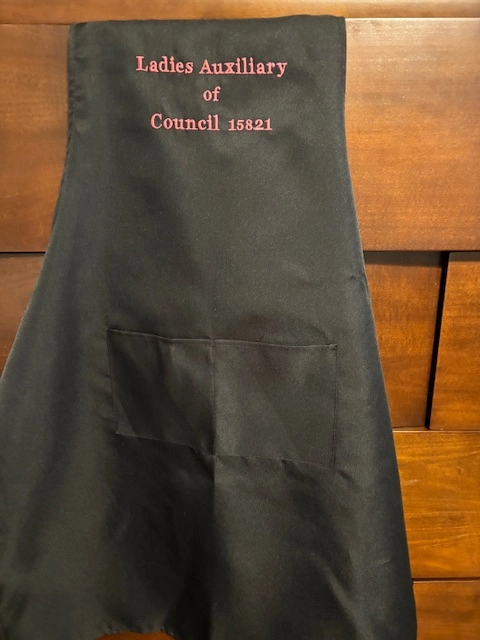Heat Transfer on T-Shirts and Aprons - Customized Designs and Logo Designs
Wiki Article
The Art of Customized Needlework: Unlocking the Tricks to Creating Distinct and Memorable Styles
Embroidery, a craft steeped in tradition and artistry, holds within its complex stitches the power to transform textile into a canvas of one-of-a-kind expression. The keys to creating custom embroidery layouts that captivate the eye and leave a long-term perception depend on a delicate equilibrium of strategy, creativity, and interest to information. As we look into the world of personalized needlework, we reveal the nuanced interplay in between string choice, stitch complexity, and design customization that raises a mere garment to an artwork. Join us on a journey through the art of custom embroidery as we unwind the mysteries behind crafting truly memorable and distinctive developments.Selecting the Right Embroidery Threads
When selecting embroidery threads, what vital variables should you take into consideration to guarantee the finest outcomes for your customized styles? The choice of embroidery string is crucial in identifying the last end result of your embroidered style.
Additionally, the weight or thickness of the thread plays a significant duty in the appearance of the embroidery. Thicker threads can add measurement and appearance to your style, while finer strings are ideal for detailed information and small message. Furthermore, considering the shade fastness and washability of the thread is important to guarantee that your customized styles keep their high quality and vibrancy over time. By thoroughly reviewing these factors and selecting top quality threads that meet your particular requirements, you can improve the visual charm and longevity of your stitched creations.
Exploring Various Stitch Strategies
To explore the realm of 'Discovering Different Stitch Strategies', one have to comprehend the details and subtleties that each sewing approach offers the art of embroidery. Various stitch strategies not only add visual rate of interest yet additionally add to the general texture and measurement of the style. One prominent stitch technique is the satin stitch, which includes very closely stuffed parallel stitches to develop a smooth and shiny surface, suitable for filling in forms and producing bold outlines.On the other hand, the backstitch is a flexible technique frequently used for detailing and including fine details. It includes sewing backwards to create a solid line of embroidery. Additionally, the French knot stitch includes a tactile element to layouts, best for creating distinctive accents like blossom facilities or attractive touches.
Exploring different stitch methods enables embroiderers to play with light, shadow, and depth within their designs, boosting the visual allure and creative top quality of their embroidery tasks. By grasping different stitching methods, one can unlock countless opportunities for developing special and memorable customized needlework items.
Incorporating Personalized Design Components
Having actually checked out the intricacies of different stitch methods such as the satin stitch, backstitch, and French knot, the focus currently shifts in the direction of including personalized layout elements in personalized needlework projects. Customized hop over to here design aspects play an important role in making embroidery tasks really special and remarkable. One means to integrate customization is by including initials, names, or considerable days to the style. This not only includes a customized touch but also improves the nostalgic value of the needlework piece.One more method to integrate individualized style aspects is by consisting of icons or motifs that hold special definition to the recipient or reflect their interests and character. As an example, integrating a preferred blossom, animal, or hobby-related sign can make the Visit Website needlework layout more significant and tailored. Additionally, selecting shades that reverberate with the recipient or line up with the designated style can even more enhance the personalization of the embroidery project.
Understanding the Art of Shade Control

One key aspect of color sychronisation is recognizing color theory. This includes understanding just how various shades interact with each other, the feelings they convey, and just how they can be incorporated to develop visually appealing designs. By applying color theory concepts, embroiderers can develop harmonious color schemes that boost the total appearance of the design.
Furthermore, taking note of comparison is crucial in color coordination. Utilizing contrasting colors can help certain elements of the style pop, boost readability, and produce a visually vibrant embroidery item. By grasping the art of shade control, embroiderers can raise their designs and develop remarkable items that resonate with customers and audiences alike.
Enhancing Structure With Advanced Needlework Stitches

Bullion knots, on the other hand, can be made use of to develop twisted, ropelike components that include a lavish feeling look these up to the embroidery. Trying out with these sophisticated embroidery stitches allows you to press the limits of conventional embroidery and develop genuinely special and visually enticing structures in your designs.
Verdict
Finally, the art of customized embroidery entails a combination of choosing the ideal threads, checking out various stitch strategies, integrating personalized style aspects, mastering shade coordination, and boosting structure with advanced stitches. By comprehending and executing these vital aspects, embroiderers can develop special and memorable styles that showcase their imagination and ability. Embroidery lovers can unlock the tricks to producing beautiful and bespoke items that stand out and leave a lasting impression.Report this wiki page